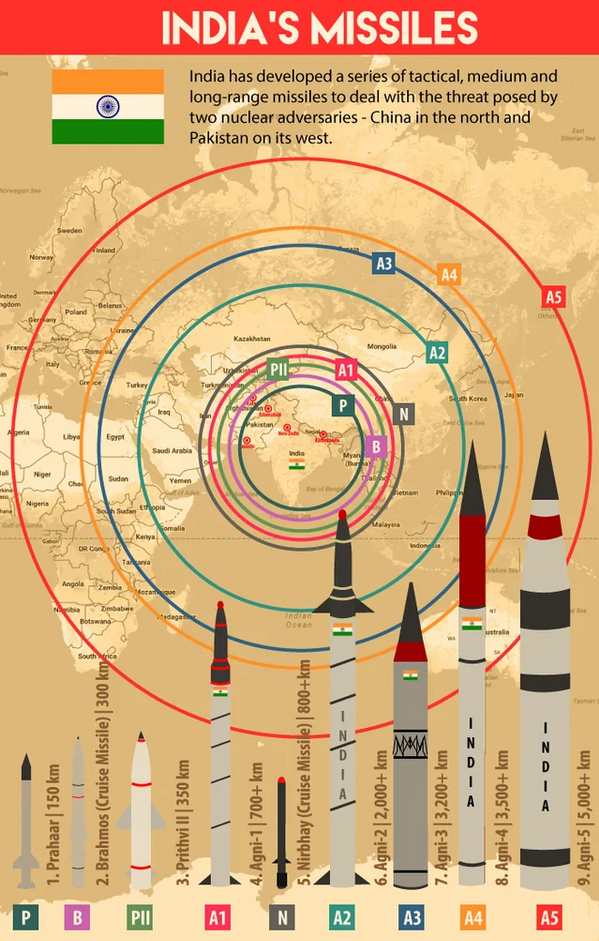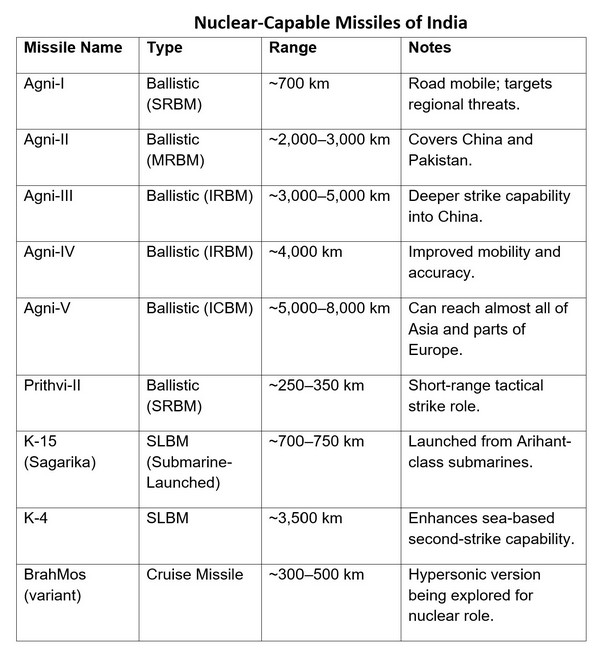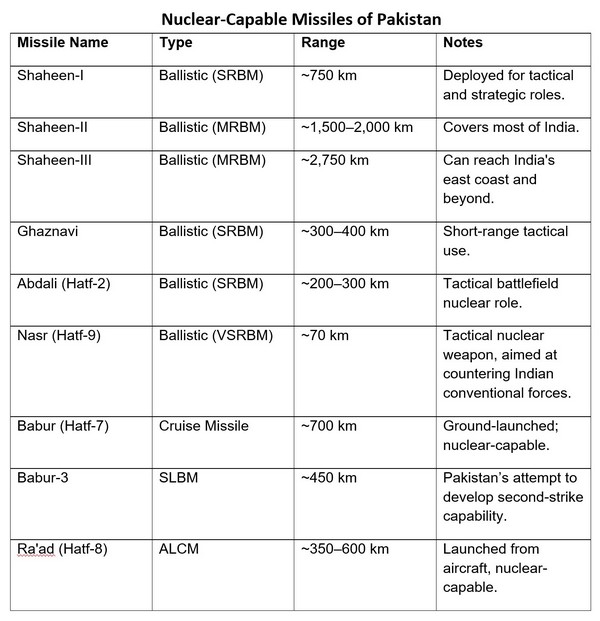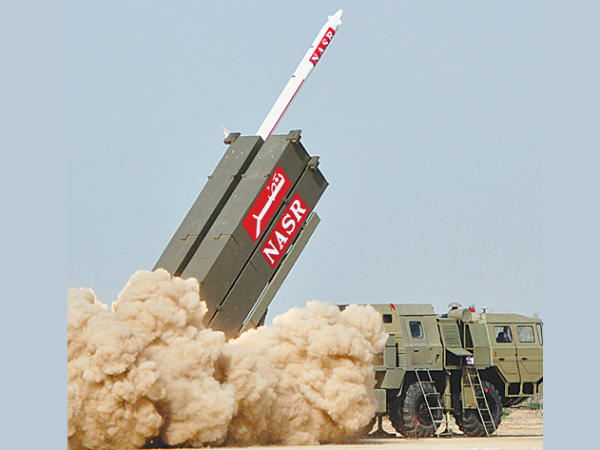On April 22, unknown terrorists attacked tourists in the Baisaran Valley near Pahalgam, India, killing 25 of them. The attackers reportedly segregated the victims based on religion before executing Hindus. Like earlier terror strikes, such as the 2001 Indian Parliament attack, the 2008 Mumbai attacks, the 2016 Uri attack, and the 2019 Pulwama-Balakot crisis, the latest attack has inflamed relations between India and Pakistan and led to cries for war. In the days following the attack, there have been armed skirmishes on the border amid calls for restraint from the international community.
The rivalry between India and Pakistan remains one of the world’s most dangerous conflicts. Since their simultaneous emergence from British colonial rule in 1947, the two countries have engaged in multiple wars and persistent low-level skirmishes. What makes their conflict uniquely perilous is the fact that both are nuclear-armed states. With vast populations, dense cities, and history of miscalculation, an escalation between India and Pakistan has the potential to become a catastrophic nuclear war, with devastating regional and global consequences.
Background
Since partition, India and Pakistan have fought three major wars – in 1947, 1965, and 1971 and engaged in a limited conflict during the Kargil War of 1999. Most of these confrontations centered around the disputed region of Kashmir, a flashpoint that continues to create military tension. The Kashmir region is majority Muslim, but became part of Hindu dominated India during the partition following the British departure. Although Kashmir was initially granted a degree of autonomy, India has asserted increasingly repressive control over the region in response to uprisings and insurgent attacks supported by Pakistan. The Muslim population feels economically marginalized and victimized by civil rights violations, and this fuels continuing unrest. Terror attacks and sectarian violence in Kashmir can quickly bring the two countries to the brink of war. Each such episode underscores the fragility of peace and the volatility of the relationship.
The Nuclear Threat
Both India and Pakistan maintain growing nuclear arsenals, each estimated at around 170–175 nuclear warheads as of 2024. India has a declared no first use policy, pledging not to initiate a nuclear strike but reserving the right to respond massively if attacked with nuclear weapons. Pakistan, in contrast, has refused to adopt no first use, retaining the option to use nuclear weapons to counter a large-scale conventional invasion. Moreover, Pakistan’s development of battlefield tactical nuclear weapons (such as the Nasr missile system) further blurs the line between conventional and nuclear conflict, potentially lowering the threshold for use.
The primary danger is that a conflict might escalate to nuclear war unintentionally. Due to the short missile flight times between India and Pakistan — sometimes just 5 to 10 minutes — leaders would have little time to verify attacks and make reasoned decisions. Miscommunication or misinterpretation of military moves, especially during a crisis or following a terrorist provocation, could lead to hasty retaliation. Additionally, domestic political pressures, fueled by nationalism and demands for retribution, can make de-escalation politically costly for leaders, thus pushing them toward riskier choices in a crisis.
There are multiple plausible scenarios under which nuclear weapons could come into play. A conventional war triggered by a terrorist attack or cross-border shelling might escalate beyond control. Pakistan might use tactical nuclear weapons early to blunt an Indian conventional thrust, prompting Indian nuclear retaliation. Alternatively, a misinterpretation of military exercises or troop movements could convince one side that a nuclear first strike is imminent, prompting a devastating pre-emptive strike. In each case, once the nuclear threshold is crossed, escalation could be rapid and catastrophic.


Small Is Ugly
Pakistan’s reliance on small tactical nuclear weapons is particularly concerning as an escalation risk. Because India’s armed forces are roughly three times bigger than those of Pakistan, tactical nuclear weapons are viewed as a potential battlefield equalizer by Pakistan’s military. The Nasr missile, with a range of less than 100 kilometers and a low-yield nuclear warhead was developed and deployed by Pakistan to counter expected large-scale Indian armored offensives. If Pakistan breaks the nuclear weapons taboo by using tactical nukes, India could respond with its own nuclear weapons, resulting in escalatory strikes and counter strikes possibly culminating in a full-scale regional nuclear war.
Pakistan’s short-range Nasr nuclear missile

Deadly Consequences
A nuclear war between India and Pakistan would devastate both countries, killing millions instantly and destroying major cities such as Delhi, Islamabad, Lahore, and Mumbai. Fallout would not respect national borders; neighboring countries like China, Nepal, Afghanistan, and Iran would suffer as well. Beyond immediate deaths, scientists predict that even a “limited” regional nuclear war could inject vast amounts of soot into the atmosphere, triggering nuclear winter, a global climate disruption that would lead to failed crops and mass starvation. This is a risk that no sane government should be willing to take.
Averting Catastrophe
Despite these dangers, there have been efforts to avoid escalation. India and Pakistan have established hotlines between military and diplomatic leadership and have engaged in unofficial diplomacy. Confidence-building measures such as agreements not to target each other’s nuclear facilities exist. International actors like the United States, China, and Russia have also intervened during past crises to pressure both sides to exercise restraint. However, these mechanisms remain fragile, often depending more on the personal judgment of leaders than on robust institutional safeguards.
To minimize the risk of nuclear escalation, several steps are essential. Strengthening crisis communication channels and making them faster and more reliable is critical. Both sides should work to improve the safety and security of their nuclear arsenals and command-and-control structures to prevent unauthorized use. Resuming arms control dialogues, even modest ones, would help rebuild trust. The international community must also continue to exert diplomatic pressure for dialogue and support regional cooperation initiatives, aiming to lower tensions in Kashmir and beyond.
Conclusion
Tensions between India and Pakistan triggered by the April 22 terrorist attack are building toward a military conflict that could go nuclear. This possibility is not a theoretical concern; it is an urgent present danger. Even a small-scale exchange would have enormous consequences, not just for South Asia but for the entire world. If a nuclear war between India and Pakistan breaks out and stops short of the worst outcomes, it might shock the world into banning nuclear weapons and permanently ending the danger of global nuclear catastrophe. Otherwise, we could face more “small” nuclear wars, each with the possibility of bringing on the last winter most of us would ever see.



Part of me wants them to fight it out.
A lot of us are totally sick of ethnic/fights. Yeah we Brits when decolonising really messed up……. But we don’t have powers to correct those mistakes. Let them sort it out…… Or let China do so.
We need to acknowledge defeat or at least that we negotiate with China. Nobody round here likes Americans. Believe me it’s real. If you’re American you may get beaten up….. It took 15 years to convict our local crime lords (the Gunns and that wasn’t a joke)….. In the end the uk national authority had to go be done in WEST midlands so as to properly prosecute corrupt dodgy corrupt coppers. Much of the crime syndicate and their cops are now in prison.
I think that’s a very unfair wish for people of any ethnic or religious group in South Asia. Cooler heads have prevailed for over 25 years, despite on and off jihadi attacks on India and the destabilization of Balochistan on the other side, that is a thorn pushed up against Iran. The Kashmir issue needs a solution but it’s paradoxically advantageous to both China and the West that these two countries, who share much more culturally with each other than the rest of the world, remain at loggerheads. Imran Khan said himself that Pakistan was used as a jihadi base for Western countries needing to occasionally use them. You’ll notice that he was quickly deposed after meeting Putin at the beginning of the Ukraine SMO. A peaceful and cooperative South Asia would be a powerful signal to the rest of the region that there are alternatives to bilateral alignments. I hope we see nothing more than a symbolic reaction from New Delhi.
Thank you Haig for posting the analysis of the latest flashpoint. This has been brewing for longer than I’ve been alive and I hope it has a peaceful ending, but then I am a pessimist.
I read a novel 25 years ago about an ecological crises wherein one of the many crises was a nuclear exchange between India and Pakistan. Pakistan moored a nuclear mine quite some distance off the coast at a certain distance above the sea bed as a precaution. When the Indian Navy came within range it was detonated. The sea bed greatly amplified the effects of the explosion, bouncing the force back to the surface. The result was the entire armada was destroyed. Very sobering. The novel is called Dust by Charles Pellegrino from 1998. The greater plot is “one natural effect topples into the next, like an array of dominoes that stretches to every corner of the globe. Before anyone realizes it, the earth’s ecology has utterly transformed itself. And the days of the old world are finished.” Yes, indeed, stick a fork in it, it’s a jackpot!
I saw an article yesterday where someone in Pakistan blamed all this on the US for creating the jihadism that has now filtered down from Afghanistan. Because if you want an armed madhouse who ya gonna call?
If it does come to nuclear war then they can blame that on us too for creating the infernal thing.
and yet its true,lol.
we used Pakistan as a spawning ground for jihadis to send into Afghanistan to mess with the Russians.
==>> 9-11-2001, Isil/Daesh, and now Syria.
and now, theyve escaped their pens and are stirring up shite at home.
Modi’s hindu uber alles stuff doesnt help. of course.
and, if i remember right, both countries have nukes because of Ike’s atoms for peace thing…or flowing from it.
but i may be misremembering(long week of toil and pain)
I was listening to a good analysis on Breaking Points, basically both India and Pakistan fund various armed groups. The group that took and the retracted responsibility for this attack is funded by Pakistan, in return India is supporting various Balochistan insurgent groups. This particular attack seems to be a payback for the Jaffar Express incident last month, where armed militants took 400 people hostage in Balochistan.
Their analysis was that this is a regular tit-for-tat between Indian and Pakistani military-intelligence complexes, who control/support insurgency/terror groups in each others back yards. So the risk of war is low and the expectation is that there will be a deescalation in the near future.
Not a lot is known in open source about Pakistans nuclear forces – many sources think that its warheads are likely to be very low quality and maybe not useable. Its ballistic missiles are crude and probably unreliable. In a nuclear exchange Pakistan is likely to come off far worse. Whether India would take the risk of losing one or two of its big cities is of course a big question. The hatred between the two countries is very deep rooted and it’s not clear that all decisions will be made rationally by either side. It’s also not obvious that either side are ambivalent about using nukes tactically.
The border itself is a big player. The disputed areas around Kashmir is extremely difficult for combat. Both sides have lost many soldiers in just carrying out exercises on those mountain roads. There has been low level combat in that area for decades as both sides (particularly Pakistan) has supported local separatist groups to keep up the pressure on India. It’s a nasty area with many people dying every year in ‘incidents’ of one form or another.
The southern part of the border is open desert, fairly flat, and ideal for classic tank warfare. The Indian army would likely dominate here, but would know that eventually Pakistan would use tactical nukes to even things up.
The other issue is the huge muslim population in India. Expect pogroms of epic proportion if there is a war with Modi in charge.
Oddly enough, the one thing that could keep things calm is Trump and his tariffs. India is openly talking about Trump delivering Indias its one big opportunity to supplant China as the big supplier of exports to the US. They may not want to blow that, so could decide to cool things down for now.
Another Hudson/Wolff on the tariffs aka Trump’s expoding cigar.
https://michael-hudson.com/2025/04/when-tariffs-replace-strategy/
An article I linked yesterday on the iPhone said India isn’t even close to replacing China on items like this. There is now an iPhone assembly plant in India that makes products from components that come from China (and, a couple, even from the US).